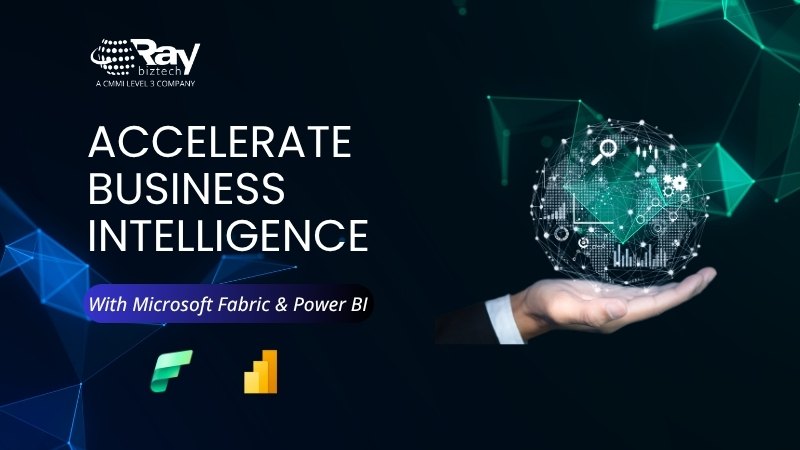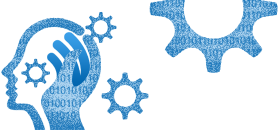Accelerate Business Intelligence with Microsoft Fabric and Power BI
 If you’re leading a digital transformation effort whether as CIO, CTO or head of innovation you know the age of simply collecting data is over. What matters now is insight: timely, actionable and clear. Organizations using systems like Dynamics 365 Business Central already have an ERP foundation.
If you’re leading a digital transformation effort whether as CIO, CTO or head of innovation you know the age of simply collecting data is over. What matters now is insight: timely, actionable and clear. Organizations using systems like Dynamics 365 Business Central already have an ERP foundation.The next step is turning that raw data into decisions. That’s where Microsoft Fabric paired with Power BI comes into play and why you might consider working with Ray Business Technologies for expert support in Fabric consulting, architecture, migration, licensing and training.
Why should Microsoft Fabric be on your radar?
In simple terms, Microsoft Fabric is a unified, cloud-based analytics platform that spans everything from data ingestion to transformation to visualization.
Here’s what it brings to the table:
- A lake-centric architecture called OneLake that avoids creating multiple data silos or duplicate copies of data.
- Integrated analytics and AI, seamlessly tied into Power BI and other workloads so you’re not just looking at dashboards, you’re generating insight.
- Simplified licensing and capacity models, meaning fewer surprises in cost and easier management.
What strategic questions should you ask?
How can we approach a Fabric implementation and migration?
When your goal is a Fabric implementation or Fabric migration, you’ll want a clear roadmap:
- Take stock of your current analytics landscape Dynamics 365 BC, on-premise warehousing, legacy systems.
- Define your Fabric architecture: decide where lakehouses and warehouses live, how pipelines are structured, how governance is enforced.
- Execute the migration: move your data into OneLake, build analytics pipelines, deliver Power BI-enabled insights, integrate your systems.
Choosing Ray Business Technologies as your Fabric consulting partner means you don’t go it alone, you get strategic orientation, implementation support and ongoing optimisation.
Why integrate SAP and Oracle systems into your analytics platform?
Many large enterprises rely on ERP systems like SAP S/4HANA or Oracle Cloud ERP. Through Fabric SAP integration and Fabric Oracle integration, you can:
- Bring transactional and master data from SAP/Oracle into Microsoft Fabric.
- Build unified analytics across ERP, CRM, supply-chain and finance functions.
- Avoid fragile, custom point-to-point ETL pipelines and move into a modern architecture.
How does Copilot and AI-driven insight change the game?
This isn’t just about looking at reports this is about asking your systems questions and getting meaningful responses. With Microsoft Fabric Copilot integration, business users might ask:
“What will our claims trends look like by region next quarter?”
In sectors such as insurance for example handling Fabric Insurance Data and Analytics, this becomes real: ingest streaming telematics or IoT data, combine it with historical claims, apply AI models, and visualise the outcomes in Power BI.
How important is training and enablement?
Even the best-designed platform won’t deliver value if your teams aren’t confident using it. That’s why MS Fabric training and Fabric training and enablement services are so essential. You need to empower:
- Your data engineers who may adopt the title “Fabric Data Engineer”.
- Your BI and analytics teams.
- Your business-user community so dashboards and insights become part of decision-making, not just nice-to-have.
Why Ray Business Technologies is your ideal partner?
As a recognised Fabric partner USA and Fabric partner Australia, Ray Business Technologies brings:
- Full-lifecycle expertise from Fabric consulting and architecture design, to migration, licensing, SAP/Oracle integration, training and enablement.
- Experience with Dynamics 365 Business Central clients as well as manufacturing and insurance enterprises.
- A focus on business outcomes not just deploying technology, but helping you deliver measurable value.
Whether you’re scanning for one of the top Microsoft Fabric partners in the USA or the top Microsoft Fabric partners in Australia or simply seeking the best Microsoft Fabric services for enterprises you’ll find end-to-end coverage here. We position ourselves as a Microsoft Fabric data modernisation partner and one of the leading Microsoft Fabric consulting companies, so your analytics platform is not just built it’s built to evolve.
What should your immediate next steps be?
Step 1: Assessment
- Review your existing BI and analytics environment: tools, data sources (including Dynamics 365 BC), reporting structure.
- Clarify your business goals: quicker insight, real-time dashboards, cost control, AI-enabled decisions.
- Identify the bottlenecks: broken pipelines, duplicated data, slow insights, fragmented reporting.
Step 2: Architecture & Design
- Map out the Fabric architecture: define how lakehouses vs warehouses are used, how OneLake is leveraged, where Power BI and Copilot plug in.
- Develop your Fabric licensing strategy: identify which SKUs you need, user types, capacity levels.
- Plan integrations: Dynamics 365 BC, SAP, Oracle, real-time data streams, legacy sources.
Step 3: Implementation
- Launch your Fabric migration: build the data pipelines, ingest and transform, provision analytics workloads.
- Run your Fabric implementation phase: set up governance, security, performance optimization.
- Deliver dashboards and insight-driven interfaces that your business users will actually adopt.
Step 4: Enablement & Adoption
- Conduct MS Fabric training across roles: from Fabric Data Engineers through to business users.
- Drive adoption: governance, usage tracking, feedback loops and continuous improvement.
- Expand the scope: as users gain confidence, roll out new analytics use-cases.
Step 5: Continuous Innovation
- Monitor performance, cost, user adoption and business impact.
- Explore advanced paths: streaming data, predictive modelling, scenario analytics.
- Plan for Fabric upgrade and feature enhancements keep your platform current and future-ready.
Final thought
If your organisation is ready to break through analytics silos, to accelerate insight and put real power into your decision-making process, then Microsoft Fabric paired with Power BI may be the transformational platform you’ve been looking for. And partnering with Ray Business Technologies means you’re building more than a system, you’re building a culture of insight.With services spanning Fabric migration, Fabric architecture, Fabric implementation, Fabric SAP/Oracle integration, Fabric licensing and MS Fabric training and enablement services, you’re well-positioned for impact. For CIOs, CTOs and transformation leaders focused on turning data into competitive advantage this is your moment to act.

